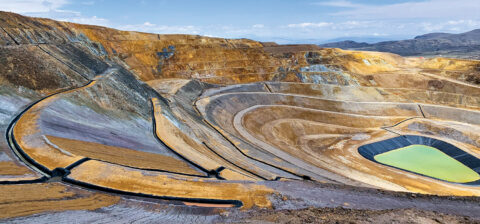Government & Politics Voice of the Local Government
Trends In Public Infrastructure Spending
The amount spent increased from R48-billion in 1998/99 to R249.9-billion in 2016/17, resulting in an average annual increase of 5.2% after discounting inflation.
State-owned companies have been the biggest contributors to public-sector expenditure over this period, spending R1.2-trillion in total.
Municipalities and provincial departments have also increased their infrastructure spending, contributing R554-billion and R643-billion respectively to build schools, hospitals, clinics and other community-related infrastructure.
Public-sector infrastructure spending over the medium-term expenditure framework (MTEF) period is estimated to total R834.1-billion.
Public housing and bulk infrastructure constructed through the human settlements development grant amounts to R57.1-billion.
State-owned companies continue to be the single largest contributor to capital investment, spending a projected R368.2-billion over the next three years. Provinces are expected to spend R165.3-billion on infrastructure over the same period, while municipalities are forecast to spend R183.8-billion.
Economic infrastructure spending, mainly by state-owned companies, accounts for 76.2% of total public-sector infrastructure spending. These funds are used to expand power-generation capacity, upgrade and expand the transport network, and improve sanitation and water services. Social services infrastructure accounts for 20% of total public-sector infrastructure spending. Of this, education and health account for 6% and 4% respectively.
The Department of Energy will focus on increasing household access to electricity over the medium-term. A total of R17.3-billion has been allocated to support the Integrated National Electrification Programme in financing grid and non-grid (stand-alone power system) connections.
Government will spend R118.2-billion on water and sanitation over the next three years, contributing 14% to public-sector infrastructure expenditure.
The public sector plans to spend R288-billion on transport and logistics over the medium-term. This accounts for 34.5% of total public-sector infrastructure expenditure during this period. These investments will improve the national transport infrastructure network, enhance the mobility of people and services, reduce transport costs and facilitate regional trade. Revenue from services provided by state-owned companies will help fund infrastructure investment, complemented by national and provincial allocations for road construction and maintenance of the non-toll network.
The Department of Human Settlements has been allocated R101.8-billion over the medium-term, which will support its aim to deliver 1.5 million state-provided housing subsidies by 2019.
The Department of Health plans to spend an estimated R21.1-billion on healthcare infrastructure in the areas of greatest need.
Over the medium-term, R3.8-billion has been allocated to the school infrastructure backlogs grant to complete projects focused on replacing unsafe schools and eliminating backlogs.
An amount of R3.1-billion has been allocated over the medium-term to the Department of Higher Education and Training to continue construction at the University of Mpumalanga and the Sol Plaatje University.
Sources: www.treasury.gov.za.





 Sign-up and receive the Business Media MAGS newsletter OR SA Mining newsletter straight to your inbox.
Sign-up and receive the Business Media MAGS newsletter OR SA Mining newsletter straight to your inbox.